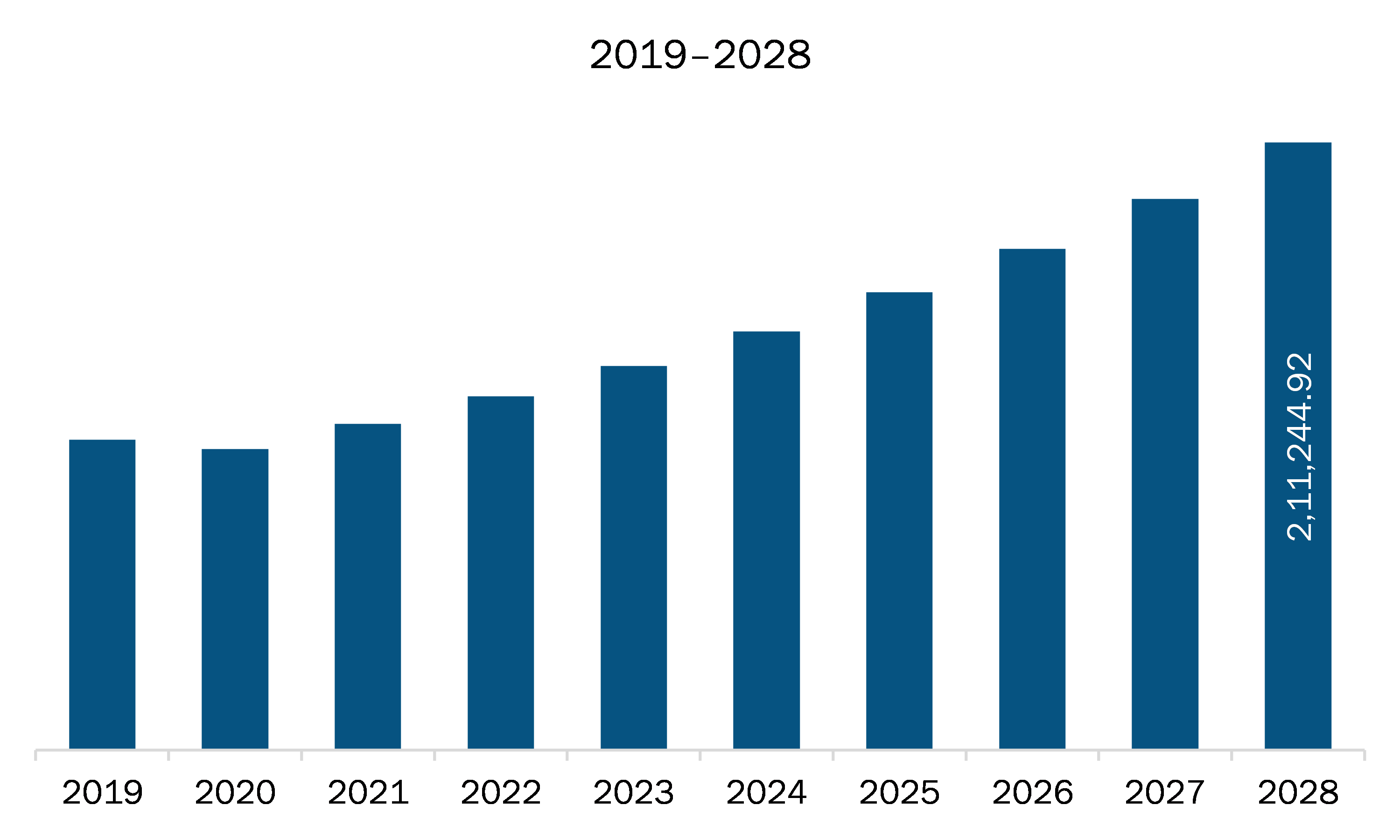The APAC basalt fiber market is expected to grow from US$ 113.35 Million in 2021 to US$ 211.24 Million by 2028; it is estimated to grow at a CAGR of 9.3% from 2021 to 2028.
China, India, Japan, South Korea, and Australia are major economies across APAC region. Greater mechanical, chemical, and thermal properties of basalt fibers is expected to catalyze the APAC basalt fiber market. There is a high demand for basalt fibers due to their comprehensive performance. Basalt fibers are chemically stable and have excellent mechanical and thermal properties. Basalt fiber have excellent tensile strength and modulus of elasticity. They are capable to withstand very high temperature and can be used in high performance applications. Moreover, basalt fibers have good physical and chemical properties. They have good adhesion to metals, epoxies, and glues. They have higher electrical insulation than glass fiber. Basalt fiber have good acid-alkali resistance, high wave permeability, non-conductive, and excellent sound insulation performance. Resistance to alkaline, acidic, and salt attack makes basalt fiber a good candidate for construction activities. Basalt fibers have advantages over other fibers such as glass fiber in terms of thermal stability, resistance to fire, overall durability etc. Due to good mechanical, chemical and thermal performance, basalt fibers are gaining increasing attention from various end-use industries, thus contributing for the APAC market growth.The Asian economies have been hit hard due to the pandemic. The emergence of new COVID-19 waves in India, Thailand, and other Asian economies has prolonged the effect of pandemic upon GDP. The ongoing COVID-19 pandemic is anticipated to cause huge disruptions in the growth of various industries in Asia Pacific. However, the uncertainty regarding the future outbreak, especially in countries such as India and a few other Asian countries, has altered the status of several industrial sectors. The governments of various Asia Pacific economies are taking possible steps to restrict the spread of the virus by announcing a country-wide lockdown, which directly impacts the growth of industrial sectors. This factor may impact the demand for basalt fibers. However, the market is expected to witness an increase in investment by players to tap the prevailing opportunities and cater to expanding demand for basalt fibers in post-pandemic times.
With the new features and technologies, vendors can attract new customers and expand their footprints in emerging markets. This factor is likely to drive the APAC basalt fiber market. The APAC basalt fiber market is expected to grow at a good CAGR during the forecast period.

- This FREE sample will include data analysis, ranging from market trends to estimates and forecasts.
APAC Basalt Fiber Market Segmentation
APAC Basalt Fiber Market – By Product
- Roving
- Chopped Strand
- Twisted Yarn
- Fabrics and Tapes
- Others
APAC Basalt Fiber Market – By End-Use Industry
- Construction
- Automotive
- Electrical and Electronics
- Chemical
- Others
APAC Basalt Fiber Market, by Country
- Australia
- China
- India
- Japan
- South Korea
- Rest of APAC
APAC Basalt Fiber Market - Companies Mentioned
- Hg Gbf Basalt Fiber Co., Ltd
- Hydro Design Management Co. Pvt. Ltd.
- Kamenny Vek Company
- Shanxi Basalt Fiber Technology Co. Ltd
- Technobasalt-Invest LLC
Asia Pacific Basalt Fiber Report Scope
| Report Attribute | Details |
|---|---|
| Market size in 2021 | US$ 113.35 Million |
| Market Size by 2028 | US$ 211.24 Million |
| CAGR (2021 - 2028) | 9.3% |
| Historical Data | 2019-2020 |
| Forecast period | 2022-2028 |
| Segments Covered |
By Product
|
| Regions and Countries Covered |
Asia-Pacific
|
| Market leaders and key company profiles |
|
- Historical Analysis (2 Years), Base Year, Forecast (7 Years) with CAGR
- PEST and SWOT Analysis
- Market Size Value / Volume - Regional, Country
- Industry and Competitive Landscape
- Excel Dataset
Recent Reports
Testimonials
Reason to Buy
- Informed Decision-Making
- Understanding Market Dynamics
- Competitive Analysis
- Identifying Emerging Markets
- Customer Insights
- Market Forecasts
- Risk Mitigation
- Boosting Operational Efficiency
- Strategic Planning
- Investment Justification
- Tracking Industry Innovations
- Aligning with Regulatory Trends






















 Get Free Sample For
Get Free Sample For